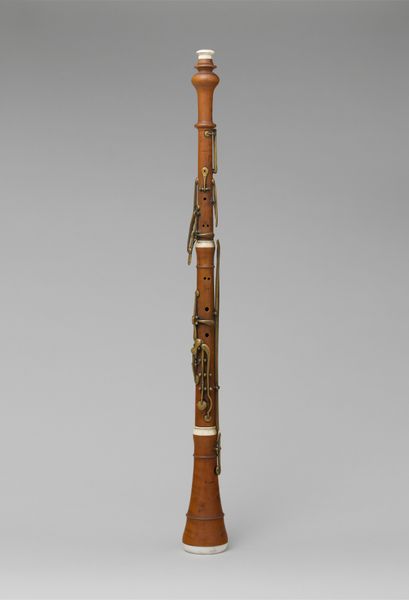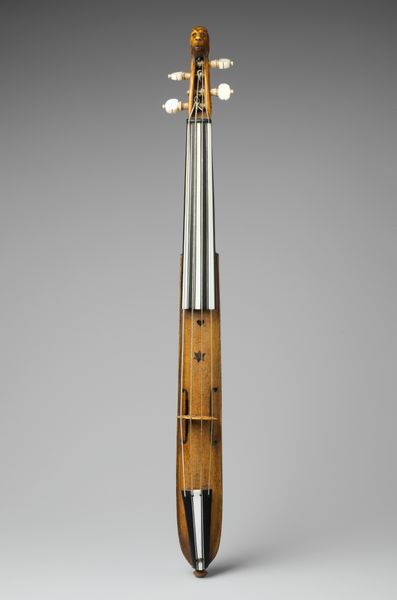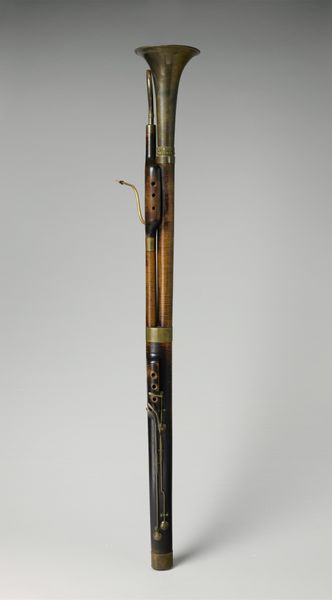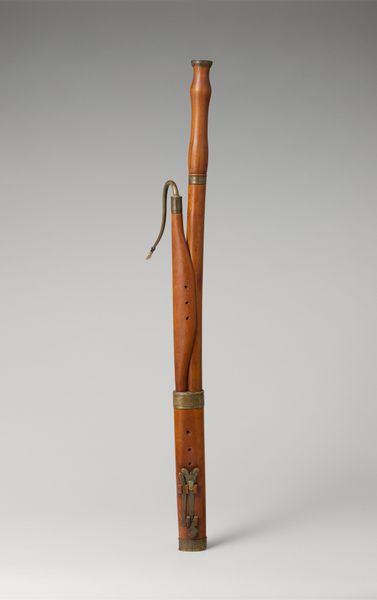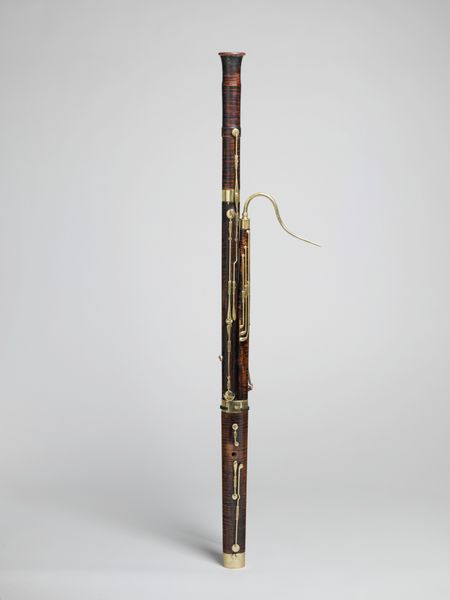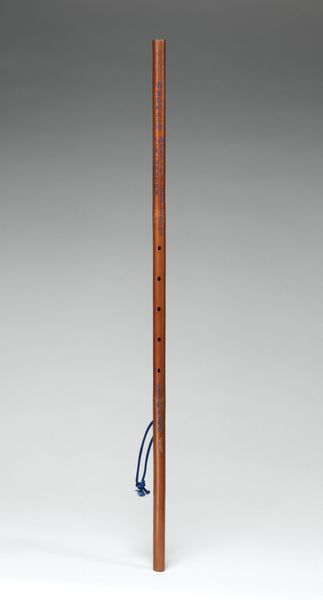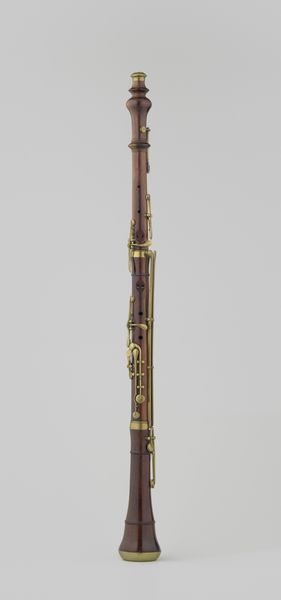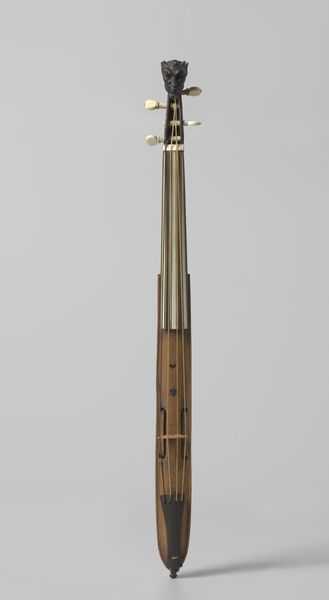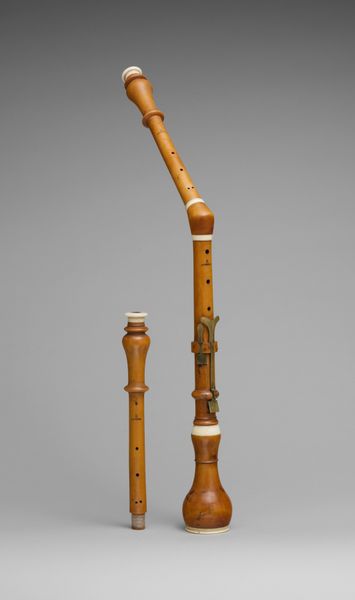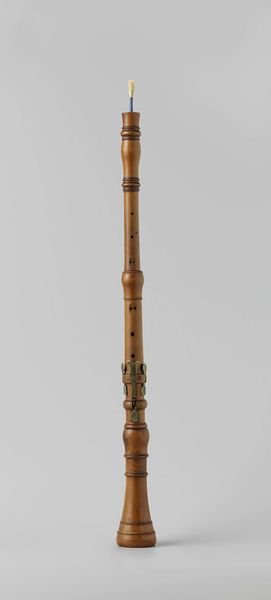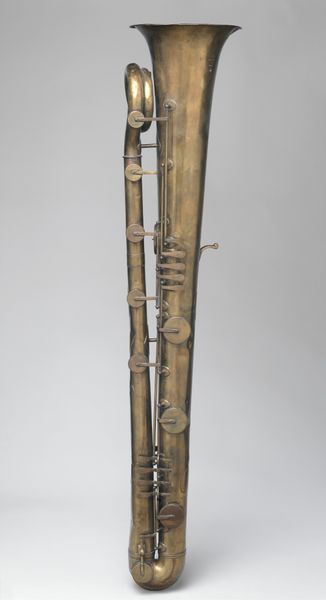
wood
#
wood
#
musical-instrument
Dimensions: 51 3/4 × 3 1/2 × 2 in. (131.4 × 8.9 × 5.1 cm) Width (With bocal): 11 in. (27.9 cm)
Copyright: Public Domain
This is a bassoon made of maple and silver by Giosue Esposito, an Italian instrument maker, in the late 19th century. In the late 1800s, Italy, despite being a relatively new nation, fostered a thriving musical culture closely tied to its opera houses and conservatories. Esposito's workshop would have been part of a network of artisans catering to the needs of professional musicians, as well as wealthy amateurs. Instruments such as this bassoon represent a complex mix of art, technology, and social practice. The bassoon itself embodies the values of its time. Its refined materials and intricate keywork reflect an era that valued craftsmanship. Looking closely at the maker's marks can tell us about workshop practices, trade routes, and the movement of skilled labor in Europe. Musical instruments, like all artifacts, are embedded in their cultural and institutional contexts. By combining formal analysis with historical research, we can better understand the social life of art.
Comments
No comments
Be the first to comment and join the conversation on the ultimate creative platform.
